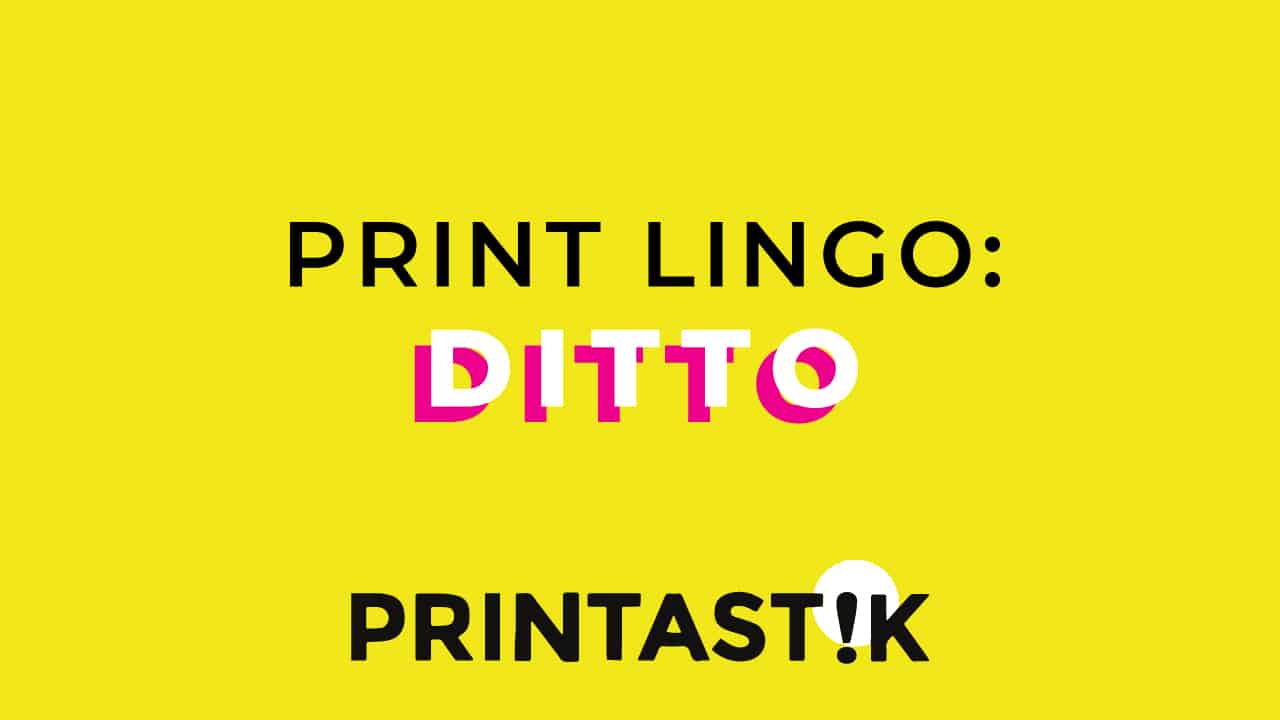No matter how much we say we hate it, jargon is a part of our lives, whether we like it or not. Many of our English sayings can be traced back to the printing business. Today, let’s explore our idiomatic saying: ditto.
The basic definitions of this phrase involve agreement and repetition. According to Merriam-Webster, ‘ditto’ means,
“A thing mentioned previously or above—used to avoid repeating a word—often symbolized by inverted commas or apostrophes.”
Its Past in Print
‘Ditto’ has a past: the word originated in Latin as “dictus” which translates to “having been said” which transformed into the Italian word “detto.” In the Tuscan dialect “detto” became ‘ditto’ and made its debut in England in the early 17th century.
In 1625, the English cleric Samuel Purchas, not to be confused with Samuel Puchas the author of A Theatre of Political Flying Insects (don’t ask us) published a massive four-volume collection of travel stories titled Pilgrimage. Volume X. IX. & 4 or Volume 10, Chapter 9, Part 4 of Pilgrimage contains the first published reference of ‘ditto’:
“The eight and twentieth ditto, I went in company of the Commanders to the Generals Tent.”
This use of ‘ditto’ is a little outdated since it’s referring to the month already named. In this case, March was mentioned on the previous page. Especially for large volumes of books with dates, like Samuel’s collection of travel logs, it was an easier way of referring to the date.
For example, you could write “20 February and 21 ditto” instead of “20 February and 21 February”. This would save an early modern printer a lot of ink and time setting the type.
As a Noun
‘Ditto’ gradually shifted to a vernacular noun to mean “the same” or “the aforementioned.” Authors in the late seventeenth century and eighteenth century began to use ditto to avoid the repetition of a previous word or phrase. As in William Verral’s 1759 cookbook:
“Parsley roots, and leaves of ditto.”
The word ‘ditto’ gained steam, so to speak, in 1923 when the printing method spirit duplicator, also referred to as “the ditto”, was invented by Wilhelm Ritzerfeld.
As an Adverb
Today, ‘ditto’ is often used as an adverb meaning “I agree with what you just said” or “I second that”, but it has the power to go beyond mere agreement.
For example, when Patrick Swayze’s character in Ghost says “I love you” Demi Moore responds with, “Ditto..” She could have said “agreed” but it would sound rude because that implies she only agrees with his proposition: by saying ‘ditto’ she is declaring “I love you too” or “I feel the same.” Ditto references back to previously-said words and their sentiments, and thus performs the act of speaking the phrase aloud. In short, it carries the concept of an actual phrase or feeling without repeating it.
If you’re still confused about how to use the phrase correctly, here’s a guide so you can save your breath.
Print with Printastik
At Printastik, we love exploring the history of print to understand how it affects us today. We pride ourselves on being able to make your digital dreams come true. Partner with our team in Minnesota by calling (651) 659-9680 or emailing us atsales@printastik.biz.
